Salvia is a genus of plants in the mint familyLamiaceae,which has nearly 1000 species. The common name for salvia is sage. According to theUniversity of Wisconsin-Madison, sage has often been celebrated as the plant of immortality, health, and wisdom during the Roman period.
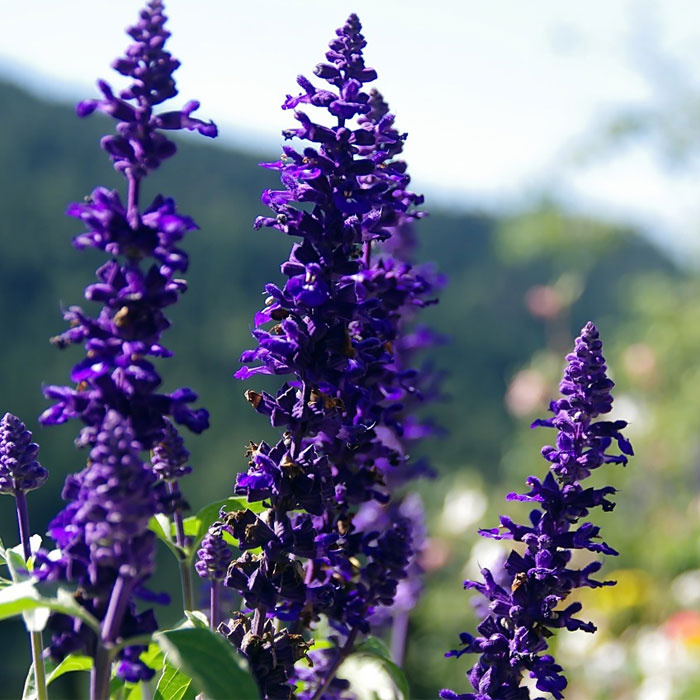
Image credits:DEZALB
Salvia plant has its roots in the Old World and the Americas and has three regions of diversity: Central and South America, Central Asia and the Mediterranean, and Eastern Asia. Some salvia species, likeSalvia officinalis,feature culinary andherbalqualities, while others serve more ornamental purposes.
To help you get started, we’ve rounded some of the most popular varieties with useful tips for planting and caring for this ancient medicinal plant.
Salvia Overview
Botanical name:Salvia officinalis
Common name:Common sage
Height:Up to 2 feet
Flower color:Blue, pink, purple, red, white, yellow
Hardiness zones:4-10 USDA
Toxicity:Most species are non-toxic
Popular Salvia Varieties

We’ve compiled a list that features a variety of species, ranging from herbaceous to ornamental and early spring to semi-evergreen perennial salvias. The best part—they all have an extended blooming period.
Scarlet Sage(Salvia splendens)
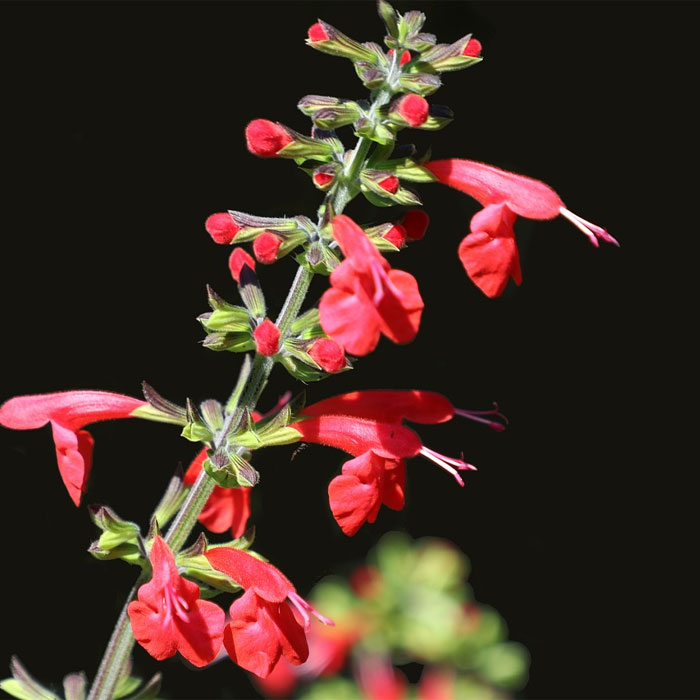
Image credits:Wellenbach
Season of bloom:Summer to the first frost
Plant type:Herbaceous perennial or annual
Height:1 to 3 feet
Scarlet sage is native to Brazil and is a perennial plant, but it is often grown annually in colder climates. During its long blooming season, this salvia plant produces flowers in shades of burgundy. However, you’ll often find cultivars in other colors: pink, blue, lavender, orange, and white are a few.
Scarlet sage is a low-maintenance plant that is easy to care for. It thrives in a spot that gets plenty of sunshine or partial shade. To keep your plant happy, ensure the soil drains well, as excess water can cause health issues.
Mealycup Sage(Salvia farinacea)
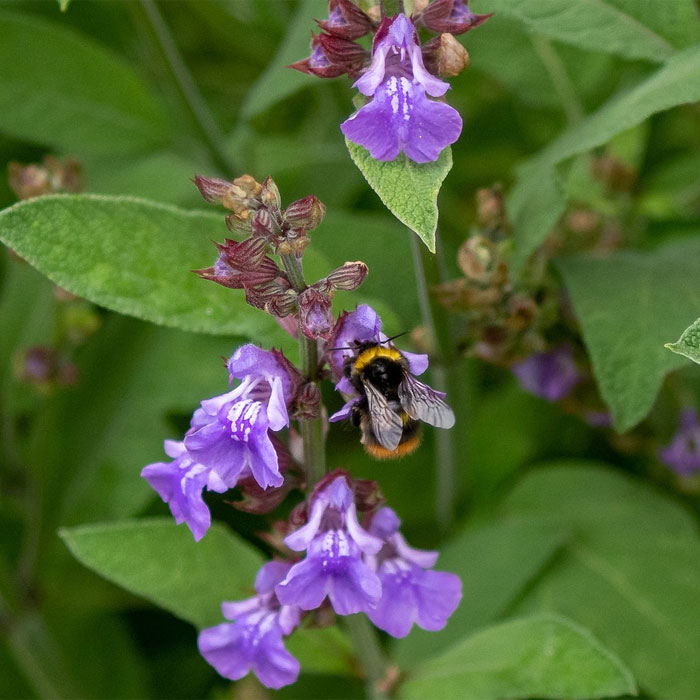
Image credits:wenzlerdesign
Season of bloom:Spring, summer, late autumn
Height:2 to 3 feet
Mealycup sage is native to south-central America and northeast Mexico. This blue-purple salvia produces attractive spikes and small flowers. The blooming season of mealycup sage starts as early as spring and goes late into the autumn, keeping your garden colorful for months.
Plant mealycup sage in well-drained, moist, or clay-rich soil. Prune after the blooming season. Water the plant every 10 to 14 days during the growing phase or more often if it’s scorching hot. Also, don’t hide it in the shade—it loves full sun!
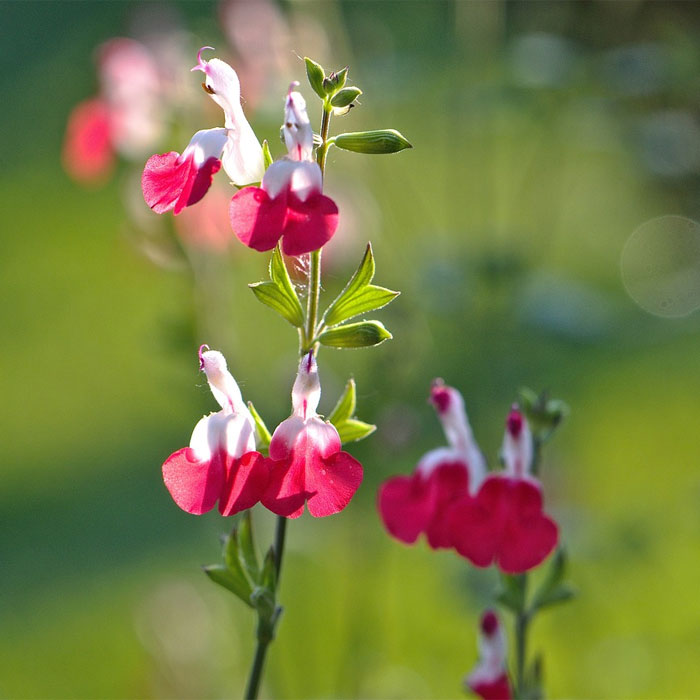
Image credits:HelgaKa
Season of bloom:Spring, summer, fall
Plant type:Evergreen shrub
Height:3 to 4.5 feet
Clary Sage(Salvia sclarea)
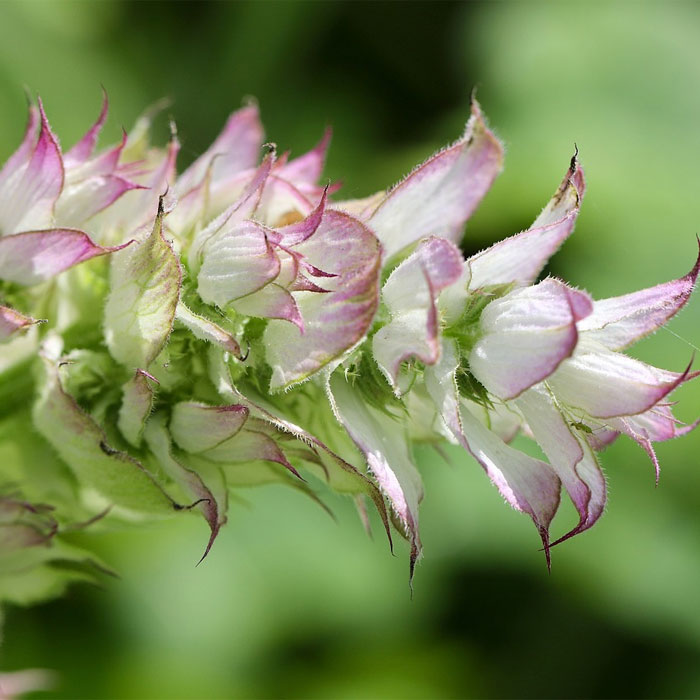
Image credits:Nennieinszweidrei
Season of bloom:June to August
Plant type:Biennial or short-lived herbaceous perennial
Height:2 to 5 feet
Clary sage is a plant that originates from the Mediterranean region of southern Europe to central Asia. It blooms in fragrant, showy white-lavender blossoms and is a perfect pollinator to complete any garden. Clary sage is also edible and herbaceous; most butterflies find them very attractive.
Salvia sclareais a drought-tolerant plant and requires little watering. It prefers full sun and well-drained, sandy soil. Just don’t over-fertilize the soil, or you’ll get tall plants with few flowers.
Gentian Sage(Salvia patens)
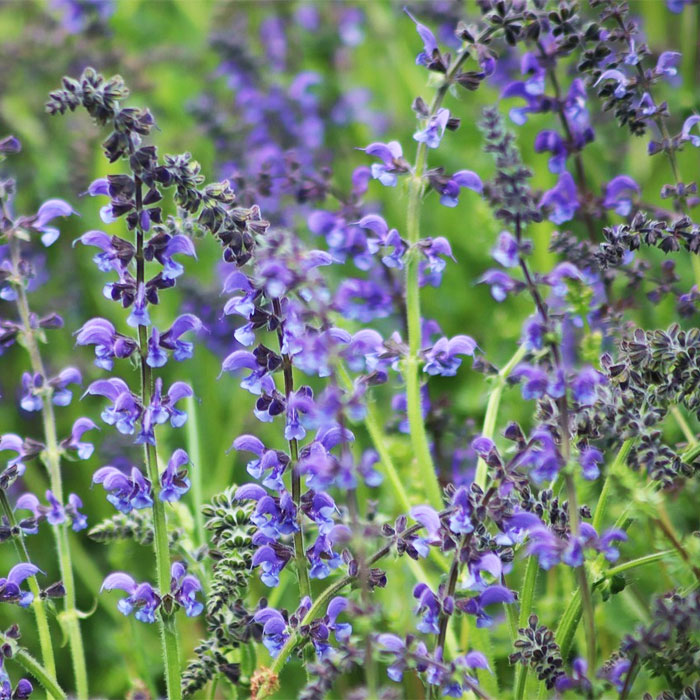
Season of bloom:Mid-summer to mid-fall
Plant type:Herbaceous perennial
Height:12 to 24 inches
Gentian sage, a plant native to a vast region of central Mexico, boasts of beautifully blue salvia flowers with a green calyx, making them quite appealing to the eye. While it can tolerate droughts, frost will kill these species.
Gardeners consider it an annual plant because it is sensitive to hard frost. However, Gentia sage roots can be easily lifted from the ground and kept in a greenhouse during winter. The plant generally thrives in full sun and requires well-drained, humus-rich, moist soil that is not overly soggy.
Pineapple Sage(Salvia elegans)
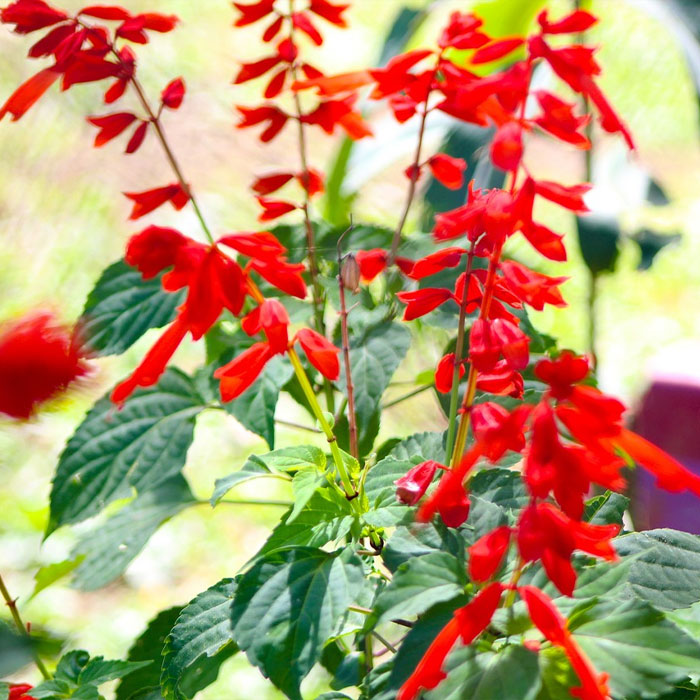
Image credits:JuPereirafotografia
Season of bloom:Late summer to early fall
Height:3 to 5 feet
Pineapple sage is native to Mexico and Guatemala. The plant produces edible red flowers of a fruity, sweet flavor with a hint of mint and pineapple. Hummingbirds love pineapple sage, and it could also open new flavors in your kitchen.
It’s best to plant salvia in an area with full sunlight and moist, well-drained soil for optimal growth. Make sure to water it regularly during the growing season while reducing the watering during winter.
Mexican Bush Sage(Salvia leucantha)
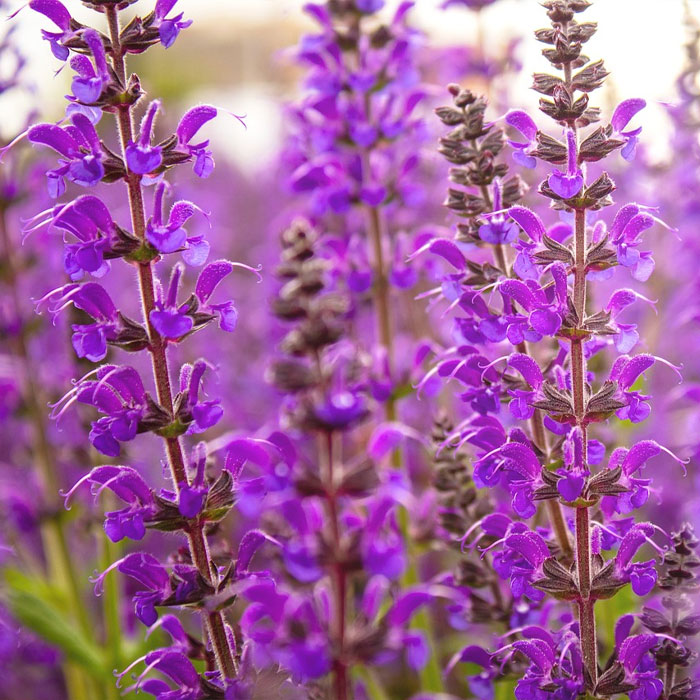
Image credits:jotoya
Season of bloom:Summer to fall
Native to Mexico and Central America, the Mexican bush is a drought-tolerant plant that produces showy spikes of velvety purple salvia flowers—an excellent choice for beds, borders, containers, and rock gardens.
Plant it in full sun or partial shade and well-drained soil. The plant is low-maintenance and requires minimal pruning and watering. It is often grown annually in harsh climates, as it can’t survive freezing temperatures.
Autumn Sage(Salvia greggii)
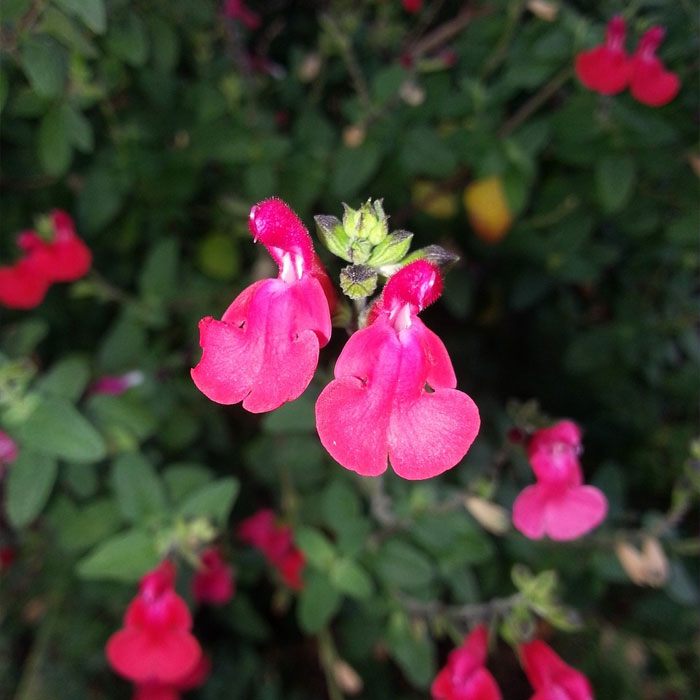
Image credits:Celia05
Season of bloom:Late summer to autumn
Plant type:Herbaceous perennial or woody sub-shrub
Autumn sage is a drought and salt-tolerant plant originating on rocky slopes in Texas. Different cultivars offer a range of flower colors, including red, coral, and mixed with white.
To keep your autumn sage happy, use rocky soil that drains well. Plant this sage on slopes and naturalized zones as a garden border or mass planting. Autumn sage thrives in full sun but can tolerate afternoon shade in hot zones.
Texas Sage(Salvia coccinea)
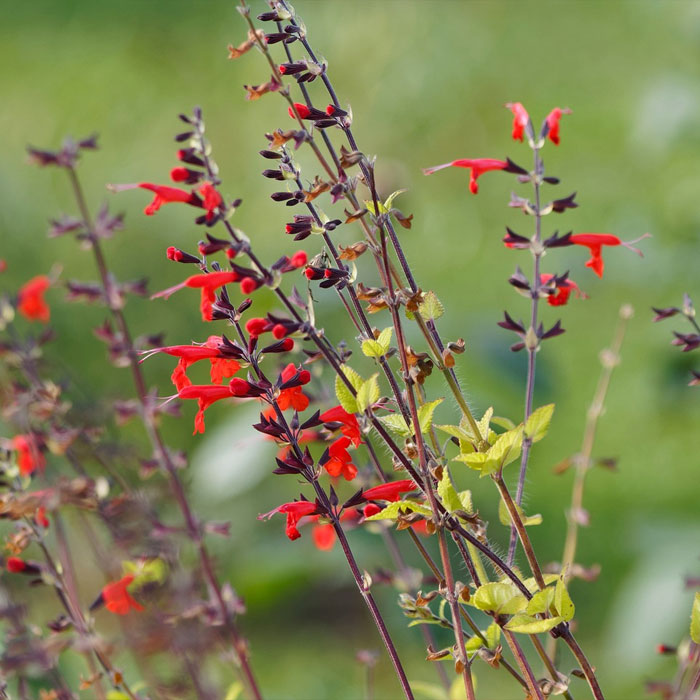
Image credits:mbc-2016
Season of bloom:Early summer to the first frost
Plant type:Ornamental perennial or annual
As a native to Mexico and southeastern America, Texas sage is perennial in warmer and annual in colder climates. The bright red flowers are often confused with the pineapple sage, which is edible. However, the Texas sage is a purely ornamental plant with a prolonged blooming season.
The best place to grow Texas sage is full sun to partial shade in sandy, fertile, or clay soil with good drainage. It can withstand drought, but if you water it during the dry, it will bloom in abundance.
Anise-Scented Sage (Salvia guaranitica‘Black and Blue’)
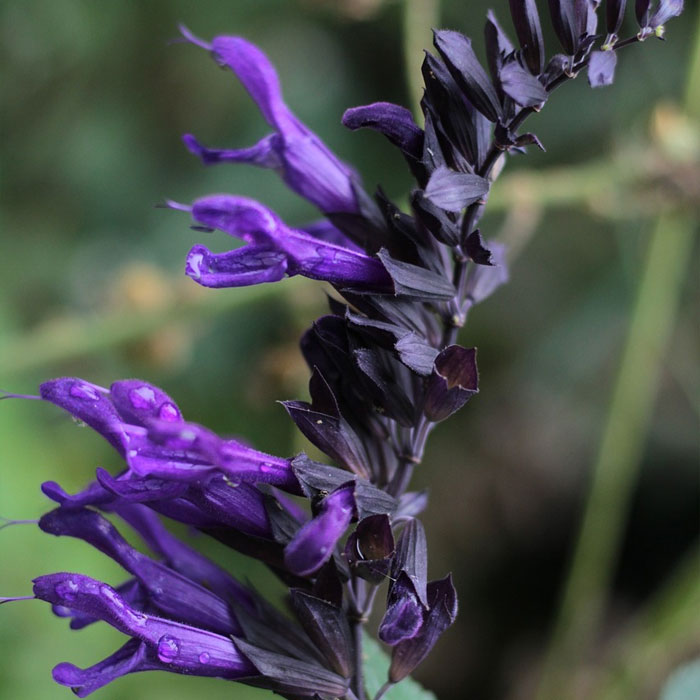
Image credits:Sonja-Kalee
Season of bloom:Late summer to fall
Plant type:Perennial or annual sub-shrub
“Black and Blue” is a cultivar ofSalvia guaranitica, producing fragrant dark green leaves and cobalt-blue flowers sticking out of the black calyces. Although the leaves are flavorless, the nectar of the flowers attracts hummingbirds, bees, and butterflies.
The fast-growing plant enjoys full sun, high organic matter, and loamy, sandy soil. It prefers humidity but needs good drainage. Prune this cultivator to the ground in late winter.
“Rose Queen”(Salvia x digenea)
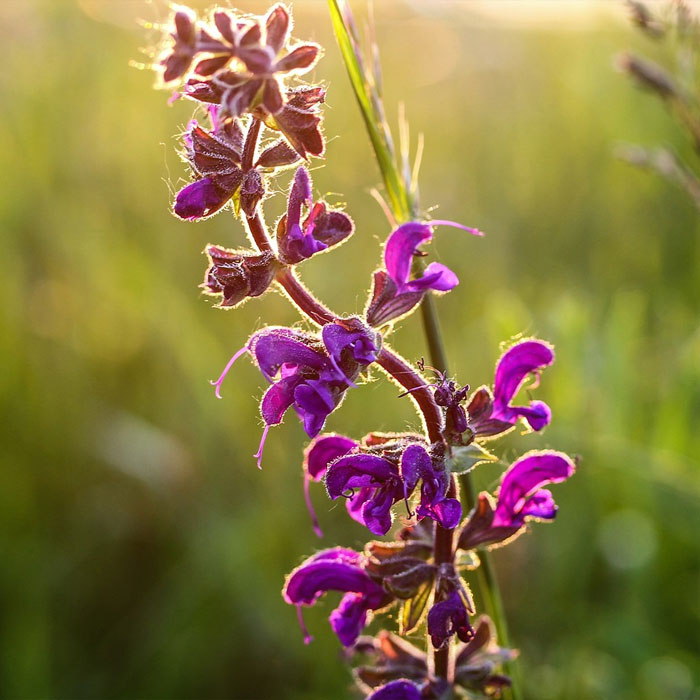
Image credits:IlonaBurschl
Season of bloom:Spring to summer
Plant type:Perennial
“Rose Queen” is aSalvia x digeneacultivator, a cross betweenSalvia amplexicaulisandSalvia nemorosa. Like most perennial salvias, “Rose Queen” thrives in colder mountain areas, blooming in stunning rose-pink flowers.
Plant this hybrid sage in butterfly, cottage, pollinator, drought-tolerant, and border gardens. “Rose Queen” prefers well-drained soil and full sun but can thrive in part of shade.
Forsythia Sage(Salvia madrensis)
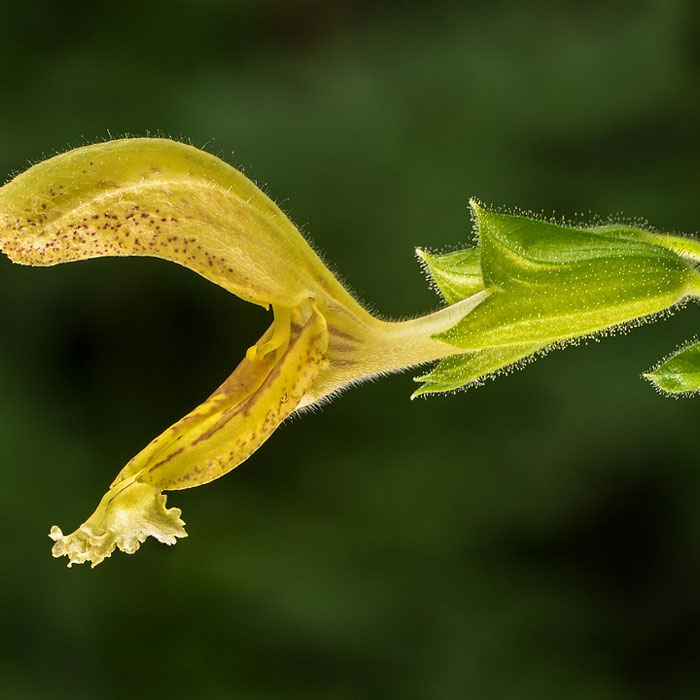
Image credits:adege
Season of bloom:Fall to winter
Plant type:Semi-evergreen perennial
Height:4 to 7 feet
The forsythia sage is native to the mountains of Mexico and blooms later than other plants. It produces yellowish flowers that can bloom as late as winter, provided it’s warm enough. The forsythia sage’s blooming season can vary depending on climate, with a shorter season in colder regions and a more extended blooming season in frost-free areas.
Forsythia sage grows best in full sun but appreciates some afternoon shade during extreme heat and prefers well-draining soil that is kept moist. We recommend watering it more frequently during dry periods.
Russian Sage(Salvia yangii)
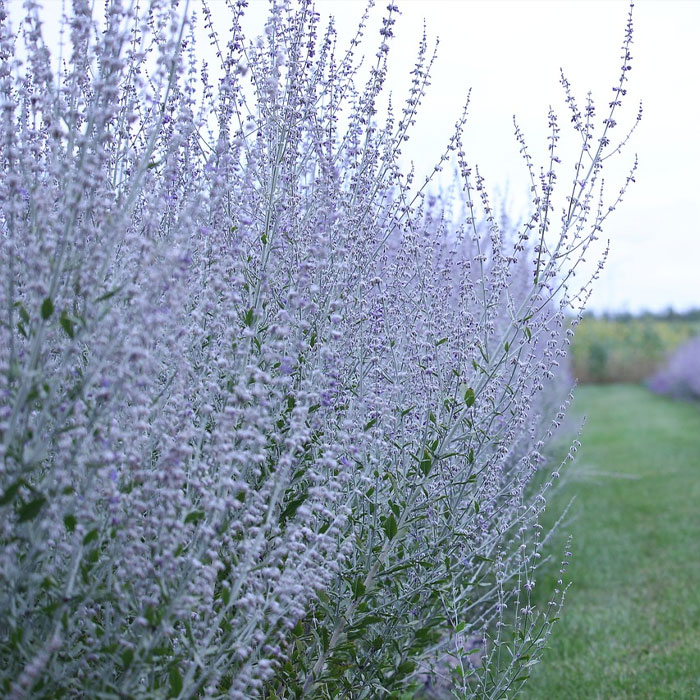
Image credits:melsisley
Season of bloom:June to October
Plant type:Perennial shrub
Height:2 to 4 feet
The common name of Russian sage is misleading since it isn’t a native of Russia. Originally from the hills of southwest and central Asia, this sage variety produces grayish-silvery, aromatic leaves and showy, purple-blue salvia flowers.
Russian sage performs best in dry, arid climates. Preferably like to be planted in full sun and well-drained, occasionally dry soil. Cut back stems to a few inches above the ground in early spring for good seasonal growth.
How to Plant Salvia?

How to plant
When to plant
Plant salvia seeds indoors in late winter or early spring, about six to eight weeks before the last frost. Then, transplant them outdoors. You can also plant salvia seeds or plants in late spring or early summer.
Where to plant
Plant salvia in a sunny spot and well-drained soil in your garden or containers. Salvia plants are drought-tolerant and thrive in warm climates.
How to water
Water salvia plants until the soil is evenly moist. Keep it moist until the seedlings emerge—around two weeks.
How Do You Prevent Salvia from Weeds?

Mulch the soil.Mulching helps to suppress weed growth, retain moisture, and improve soil quality.
Apply a pre-emergent herbicide.The best time to apply herbicide is before the weeds have a chance to germinate.
Avoid over-watering and fertilizing.Water only when the soil is dry, and use balanced fertilizer once in the spring to avoid weeds.
Landscape Design Tips
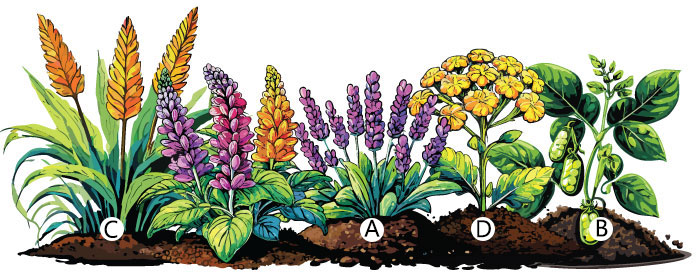
Pairing salvia with other plants is a highly effective way to design your garden. Companion plants benefit each other in many ways, such as repelling pests, contrasting the flowers, or improving soil health.
If you’re keen on growing salvia, adding a few companion plants is ideal for most salvia species.
A. Lavender.Lavenders thrive in well-drained soil and full sun. Like salvia, they’re often grown for their aromatic foliage.
B. Legumes.Legumes can fix nitrogen from the air and add it to the soil, which boosts salvia’s growth and flowering.
C. Ornamental grasses.Like salvia,ornamental grasses thrive in full sun, adding a beautiful contrast to the spiky salvia flowers.
D. Yarrow. Yarrow releases copper, phosphorus, and other nutrients into the soil when it decomposes, attracting beneficial insects and repelling some pests.
FAQ
Now that we’ve covered some of the most popular salvia varieties you can bring to your garden, let’s look at some of the common questions relating to these flowering herbs.
Are All Salvias Edible?
No, not all salvia species are edible. Some ornamental salvias are best kept off your dinner table. They aren’t poisonous but have a strong and bitter flavor that isn’t particularly pleasant. The edible salvias are commonly called sage, like the commonSalvia officinalis.
Salvia can be used in various forms, such as fresh or dried, in tea, as an extract, oil, or tincture. However, some types of salvias, such assalvia divinorum, have psychoactive effects and are illegal in some countries.
What Are the Benefits of Salvia?
According to theEuropean Medicines Agency, salvia has a lengthy history of medicinal use in ancient Egypt, Greece, and Rome, later spreading to India as well. Sage is known for its antispasmodic, antiseptic, astringent, and antihidrotic properties. It was often used to improve fertility, stop bleeding, alleviate hoarseness and cough symptoms, and enhance memory functions.
Besides their medicinal benefits, different salvia species produce beautiful flowers that attract pollinators, making them a great addition to your garden. You can choose from early to late-blooming varieties or even ones that bloom for an extended period.
What Is the Benefit of Salvia Root?
According toWebMD, salvia root, also known as Danshen, is a herb used in traditional Chinese medicine. While the evidence on the topic is scarce, it is believed to improve blood pressure and heart health, as well as support wound healing.
The root, just like the salvia plant leaves, can be taken as a tea, extract, oil, or tincture. However, it may interact with some medications. You should always consult your doctor before using salvia root for any purpose.
Home & Design